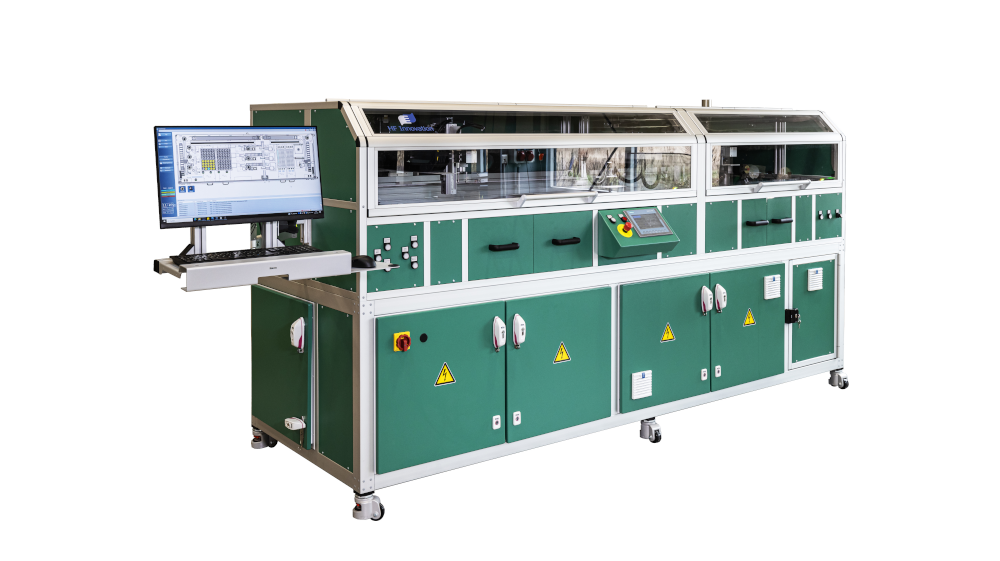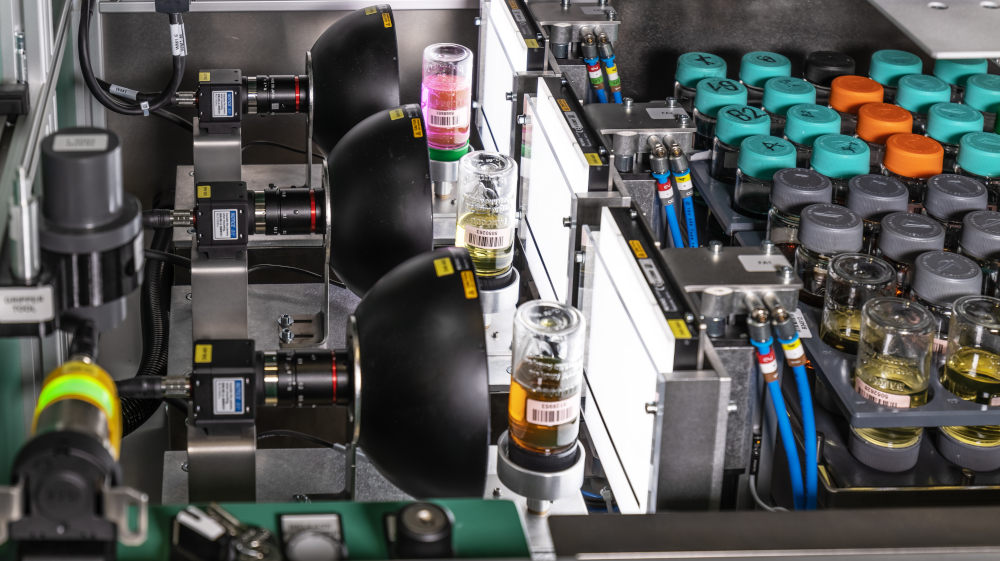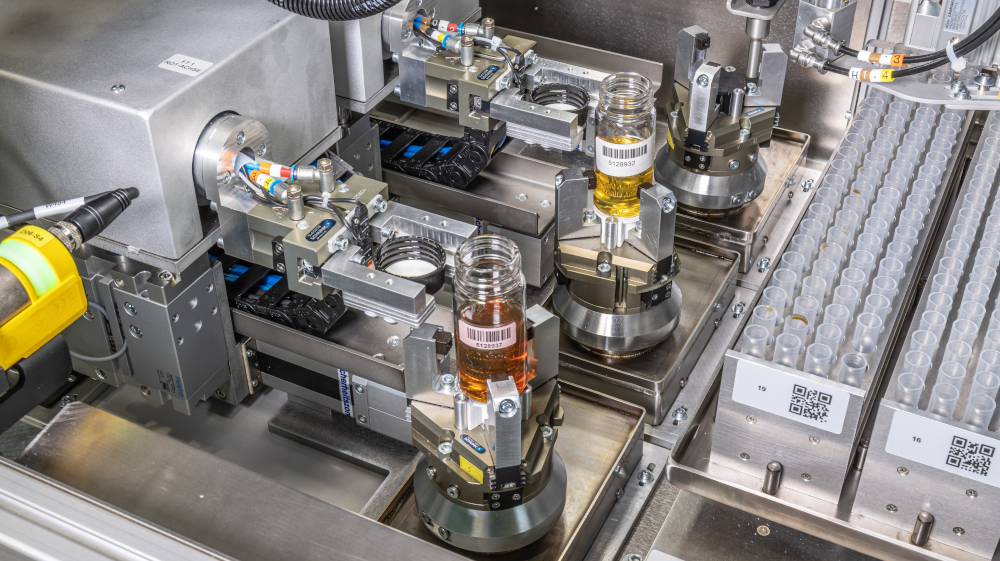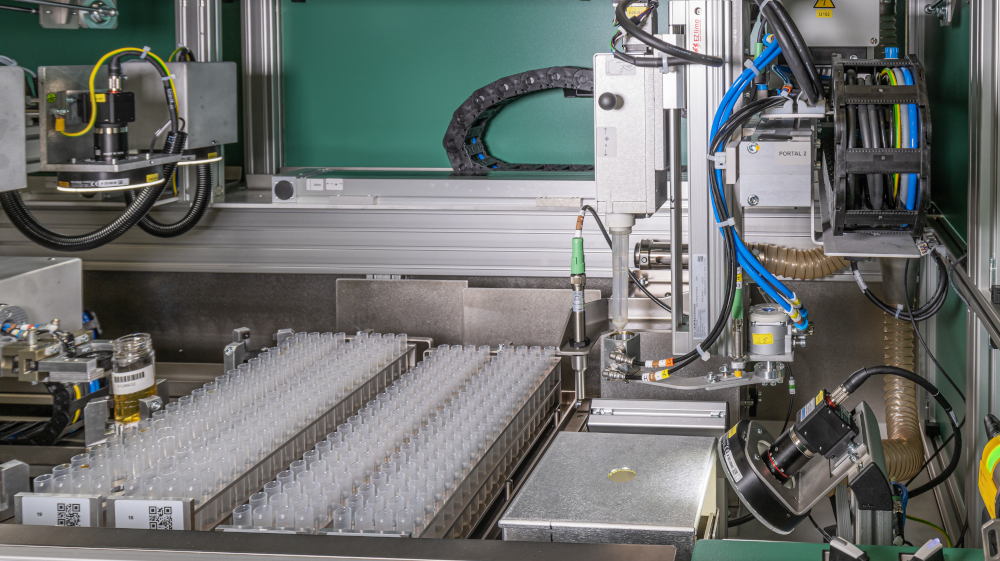
Visual Inspection, Crackle and Aliquoting Module




AUTONOMA’s Visual Inspection, Crackle and Aliquoting Module is designed to be customised for any visual inspection tasks for oil or coolant samples.
By default, this includes turbidity, colour measurement, inspection of particles stuck to the bottle lids, and the crackle test. Sample is also aliquoted from the bottle into test tubes for the standard suite of tests (ICP, FTIR, and viscometry).
It is a compact and fully integrated solution for preparing and analysing oil samples with high levels of speed, accuracy, precision, and reliability. It can process a single sample in less than 90 seconds, allowing a throughput of around 1000 samples per 24 hours.
3 separate camera lines for colour and turbidity are located next to the double drawers which hold the sample bottles. 3 decapping lines connect this half to the dispensing and crackle analysis section on the right-hand side of the machine.
- AI based visual analysis provides long-term analytical precision between samples and avoids any biases between operators trying to perform the same qualitative tests.
- Customisable for any rack configuration/layout (e.g. 5 x 12 test tube racks, or 96 position Perkin Elmer racks)
- Drip catcher below pipette avoids cross-contamination while moving over other samples
The modular design supports easy expansion and interfacing with AUTONOMA’s full range of NextGen laboratory automation in the future. It can be customized to incorporate additional analytical methods and sample preparation steps, including but not limited to:
-
- AI based detection and sizing of wear particles that have settled to the bottom of each bottle.
- FTIR
- Viscometry
- PQ (Particle Quantification)
- Sample dilution for ICP/IC
- TAN/TBN
Operators load the racks each containing 20 sample bottles loaded upside down and register them in on the LabDroid software by scanning the rack barcode with the drawer barcode. This automatically receives the correct sample information directly from the Laboratory Information Management System (LIMS), eliminating the risk of sample mix-ups. On the right-hand side of the machine, the operator loads up racks with clean and empty test tubes.
The high speed XYZ gantry style robot picks up a bottle and places it on one of 3 camera lines. The camera rapidly reads the barcode, then performs colour and turbidity analysis. The robot moves the bottle to one of 3 decapping lines which turns the bottle the right way up, then decaps the lid. The lid and bottle are presented to an overhead camera which takes a high-resolution image and uses AI to look for any wear particles or debris.
A second XYZ gantry robot pipettes an aliquot of sample and dispenses it into a test tube in the rack. The remaining sample is dispensed on a hotplate for the automated crackle analysis. The reusable pipette is cleaned using solvent and dried using compressed air before the next sample is taken. The sample bottle is recapped and moved back to its original position in the tray where the operator can remove it after the tray has finished processing.
All photographs, colour, turbidity and crackle test results are transmitted straight to the LIMS immediately to ensure the chain of custody for the information is maintained.
Overall machine control is handled via a standalone PC or a server-based virtual machine running LabDroid software.
It integrates with other AUTONOMA automation systems and easily connects with popular LIMS platforms like CCLAS, Starlims, LabWare, and SampleManager, streamlining sample registration.
Results can be exported in CSV, XLS, or TXT formats, with customizable parameter layouts.
| Dimensions | 3100 x 900 x 1600mm [L x W x H] |
| Mass | ~500kg |
| Electrical requirements | 240V, 1 Φ, 50/60 Hz (can be modified upon request) |
| Pneumatic requirements | 6 – 8 bar |
| Daily throughout | ~1000 per 24h |
| Options |
|



